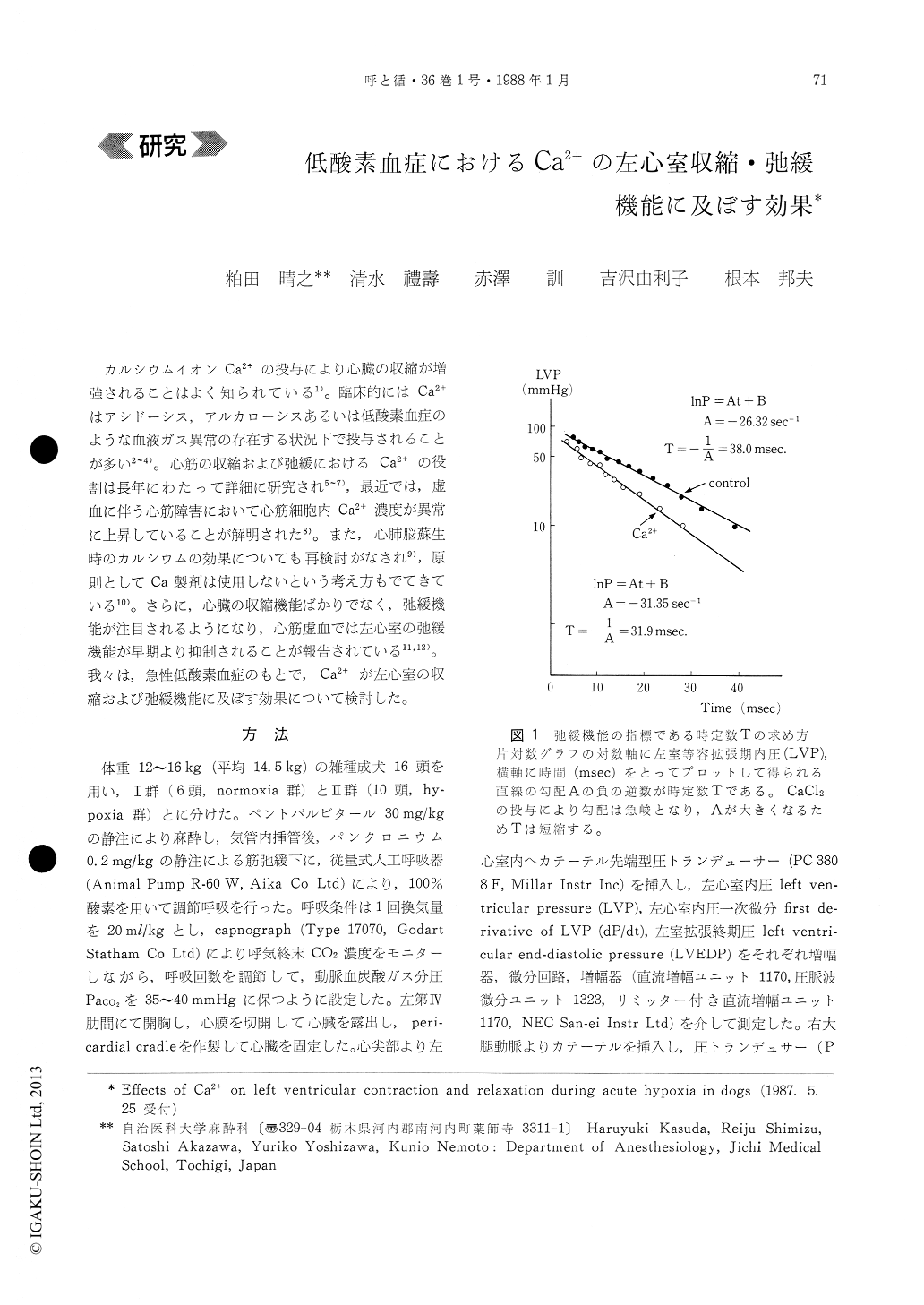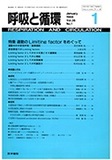Japanese
English
- 有料閲覧
- Abstract 文献概要
- 1ページ目 Look Inside
カルシウムイオンCa2+の投与により心臓の収縮が増強されることはよく知られている1)。臨床的にはCa2+はアシドーシス,アルカローシスあるいは低酸素血症のような血液ガス異常の存在する状況下で投与されることが多い2〜4)。心筋の収縮および弛緩におけるCa2+の役割は長年にわたって詳細に研究され5〜7),最近では,虚血に伴う心筋障害において心筋細胞内Ca2+濃度が異常に上昇していることが解明された8)。また,心肺脳蘇生時のカルシウムの効果についても再検討がなされ9),原則としてCa製剤は使用しないという考え方もでてきている10)。さらに,心臓の収縮機能ばかりでなく,弛緩機能が注目されるようになり,心筋虚血では左心室の弛緩機能が早期より抑制されることが報告されている11,12)。我々は,急性低酸素血症のもとで,Ca2+が左心室の収縮および弛緩機能に及ぼす効果について検討した。
The present study was undertaken to clarify the effects of ionized calcium on left ventricular con-traction and relaxation during acute hypoxia.
Methods : In pentobarbitone-pancuronium anesthe-tized open chest normoxic dogs, left ventricular pressure (LVP), first derivative of LVP (dP/dt), and left ventricular end-diastolic pressure (LVEDP) were measured through a catheter tip micromanometer inserted into the cardiac apex. In addition, arterial pressure and electrocardiogram were monitored. As an index of contraction, maximum positive dP/dt (+dP/dt max), and as an index of relaxation, the time constant (T) of isovolumic left ventricular pres-sure fall were employed, respectivery. Acute hypoxia was induced by administrating a 5% O2-95% N2 gas mixture, and arterial blood oxygen pressure was maintained between 15 and 20 mmHg. 10 mg/kg of CaCl2 was given as a single bolus intravenously and blood ionized calcium measurements were made ac-cording to the hemodynamic changes.
Results : Arterial blood oxygen tension showed 16.4±0.4 mmHg, arterial blood lactate increased to 43.3±3.1mg/dl and myocardial lactate extraction ratio became negative. Following the administrationof CaCl2, ionized calcium increased from 1.202± 0.031 to 1.808±0.078 mM (p <0.01), + dP/dt max increased from 2,990±390 to 4,630±290 mmHg/sec (p <0.01), and T showed no constant change but tendency of prolongation.
In summary, ionized calcium augmented significan-tly left ventricular contraction during acute hypoxia when myocardial lactate extraction had been con-verted to production, however, its effect was signi-ficantly smaller than during normoxia. In contast to during normoxia, ionized calcium did not shorten T during hypoxia. Under such circumstances, the administration of CaCl2 may induce irreversible myocardial damage, if effective myocardial oxygen-ation would not be achieved.

Copyright © 1988, Igaku-Shoin Ltd. All rights reserved.


